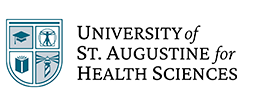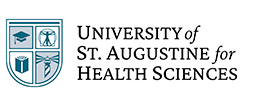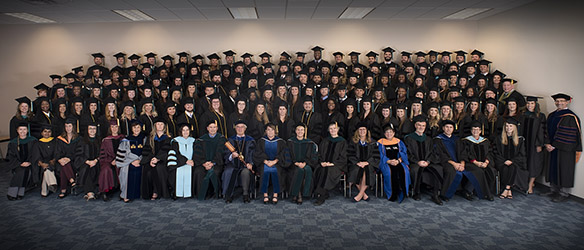
According to the National Institute on Deafness and Other Communication Disorders, 3 million Americans stutter. In one survey study, almost 18 million adults reported having experienced a problem with their voice in the preceding 12 months. And 1 in 12 children ages 3 to 17 had experienced a disorder related to voice, speech, language, or swallowing within the previous year, with boys affected more often than girls. ((National Institute on Deafness and Other Communication Disorders, “Quick Statistics About Voice, Speech, Language,” May 19, 2016: https://www.nidcd.nih.gov/health/statistics/quick-statistics-voice-speech-language))


These are just a few statistics on communication disorders, which affect people of all ages across the world. Speech-language pathology professionals work with the client and family to diagnose conditions and address them with holistic treatment plans, ultimately helping clients communicate better and lead more fulfilling lives. In this post, we explore one important role in that process—that of the speech-language pathology assistant.
What Is a Speech-Language Pathology Assistant?
Speech-language pathology assistants (SLPAs) function as support staff for certified speech-language pathologists (SLPs), by assisting in delivering treatment plans to individuals across the lifespan. Common work environments for SLPAs include clinics, schools, hospitals, skilled nursing facilities, and homes.


Communication disorders affect a person’s ability to process and produce language—one of our most important abilities as humans. Communication difficulties can affect people’s confidence level, school and job opportunities, and personal relationships. They can range in severity from a complete inability to understand speech to relatively minor issues with pronouncing sounds incorrectly. ((U.S. National Library of Medicine, “Speech and Communication Disorders,” June 2, 2021: https://medlineplus.gov/speechandcommunicationdisorders.html)) Improving and even overcoming these issues can make a big difference in a patient’s life—and many speech-language pathologists find their work to be meaningful and rewarding.
The SLP assesses the patient, provides a diagnosis, and determines their rehabilitation needs; next, they create a care plan incorporating therapeutic exercises and other interventions. During the treatment phase, the SLP works with the patient/client/student to address language and literacy, fluency, articulation, voice, cognition, social communication, augmentative and alternative communication, feeding and swallowing, and hearing. ((Adam Rowden, “What to know about speech therapy,” Medical News Today, Jan. 5, 2021: https://www.medicalnewstoday.com/articles/speech-therapy))
Job Responsibilities of Speech-Language Pathology Assistants
SLPAs are required to work under the supervision of a licensed SLP. They are tasked with assisting SLPs in their daily practice and research, with the caveat that they are not trained to provide clinical interpretation of assessments. As outlined by the American Speech-Language-Hearing Association (ASHA), the certifying organization, the job responsibilities of SLPAs may include: ((ASHA, “Speech-Language Pathology Assistant Scope of Practice,” Aug. 2019: https://www.asha.org/policy/sp2013-00337/#sec1.6.1))
- Assist with speech, language, and hearing screenings
- Provide guidance and treatment following documented protocols or treatment plans developed by the SLP
- Track and document patient performance during treatment exercises
- Train patients on the use of alternative communication technology
- Serve as an interpreter or translator for patients or family members who don’t speak English
- Manage clerical duties such as scheduling and preparing educational materials
- Perform checks and light maintenance on testing equipment
- Present educational information about prevention to those who may be at risk for speech, language, and swallowing disorders
- Support the supervising SLP in their research projects, community outreach efforts, and in-service training
The day-to-day job of an SLPA may take many forms. One practicing SLPA working in a pediatric skilled nursing facility told ASHA, “In the course of my day, I might be with children discussing types of snacks during imaginative play; using augmentative and alternative communication during play with wind-up cars, a doll house, or many other toys in a speech-treatment room; selecting books from the book nook; or even playing cotton ball hockey and having a kazoo and whistle jam session with a client working on oral motor skills.” ((Jeneane Douglas, “A Glimpse into the World of Speech-Language Pathology Assistants in the Health Care Setting,” n.d.: https://www.asha.org/articles/a-glimpse-into-the-world-of-speech-language-pathology-assistants-in-the-health-care-setting/))
5 Benefits of Becoming an SLPA


If you’re considering a career in the speech-language pathology field, opting to begin as a speech-language pathology assistant has some advantages.
#1: You Develop Practicum Experience with Patients
Pursuing a career in speech-language pathology requires extensive training and certification. You must meet certain prerequisites in order to advance to each next step in the certification process. Prerequisites include completion of certain courses and a minimum number of supervised practicum hours in the field.
The hands-on practicum experience that you gain as an SLPA offers you the chance to hone your patient interaction skills and potentially apply those clinical hours toward becoming a licensed speech-language pathologist. It’s important to note that not all states have the same guidelines and prerequisites, so be sure to research your location’s certification and licensure information on ASHA’s State-by-State page. ((ASHA Assistants Program, “Become a Certified Speech-Language Pathology Assistant,” n.d.: https://www.ashaassistants.org/pathways-speech-language-pathology-assistant/))
#2: You Create Opportunities for Better Patient Care
Studies note that patient care suffers when healthcare professionals are overwhelmed by heavy workloads. ((Maura Galletta et al., “Relationship between job burnout, psychosocial factors and health care-associated infections in critical care units,” Intensive & Critical Care Nursing, June 2016: https://pubmed.ncbi.nlm.nih.gov/26961918/)) ((KC Diwas et al., “Task Selection and Workload: A Focus on Completing Easy Tasks Hurts Long-Term Performance,” Harvard Business School, Jun 25, 2017: https://www.hbs.edu/ris/Publication%20Files/17-112_54fdf950-a08d-4ba8-a718-1150dc8916cb.pdf)) As a strategy to manage the existing workloads facing speech-language pathologists, ASHA recommends the use of SLPAs to deliver some of the required services. ((ASHA, “Caseload and Workload: Approaches to Managing Existing Workload,” n.d.: https://www.asha.org/practice-portal/professional-issues/caseload-and-workload/#collapse_4)) By joining the healthcare team as an SLPA, your efforts can lessen those burdens on an SLP, giving them more time to dedicate to improving patient care—and outcomes.
#3: You Get to Learn from an Expert
The positive impact of mentorship is well proven. In one case study, participants in a certain mentorship program were five times more likely to be promoted than those not in the program. ((Naz Beheshti, “Improve Workplace Culture With a Strong Mentoring Program,” Forbes, Jan. 23, 2019: https://www.forbes.com/sites/nazbeheshti/2019/01/23/improve-workplace-culture-with-a-strong-mentoring-program/?sh=5a695c5076b5)) For SLPAs, mentoring is built into the work experience, as ASHA requires licensed SLPs to closely supervise their assistants. With 55% of SLPs reporting that they are very or extremely comfortable supervising assistants, opportunities are readily available for SLPAs to learn from their supervisors during these real-world work experiences. ((ASHA, “2020 Schools Survey: SLP Caseload and Workload Characteristics,” July 20, 2020: https://www.asha.org/siteassets/surveys/2020-schools-survey-slp-caseload.pdf))
#4: You’ll Be in a Growing Field of Work
Simultaneous with a rapidly increasing population of seniors, the United States is facing a shortage of healthcare workers. One 2021 study found that, due largely to pandemic-related burnout, 30% of healthcare workers are considering leaving their profession. ((American Hospital Association, “Fact Sheet: Strengthening the Health Care Workforce,” n.d.: https://www.aha.org/fact-sheets/2021-05-26-fact-sheet-strengthening-health-care-workforce)) Speech-language pathology jobs are readily available, with 54% of SLPs surveyed in 2018 stating that there were more job openings than job seekers in the SLP field in their area. ((ASHA, “2018 Schools Survey: SLP Workforce and Work Conditions,” Aug. 29, 2018: https://www.asha.org/siteassets/surveys/2018-schools-survey-workforce-report.pdf)) The Bureau of Labor Statistics projects a faster than average growth of SLP job opportunities between 2019 – 2029. ((O-Net, “Summary Report for: 31-9099.01 – Speech-Language Pathology Assistants,” 2020, https://www.onetonline.org/link/summary/31-9099.01)) The breadth of job opportunities enables you to seek out the position that’s the best fit for you, which increases the chances that you’ll feel satisfied and stable in your job.
#5: You Advance Your Career Path
Working as an SLPA may be your end goal, which is great! Or it could be an early step along a longer career trajectory. Many people who are inspired to help people communicate start out as SLPAs to gain experience and see if the field is a good fit. If you like it and want to increase your responsibilities, expertise, and impact, you can move on to the next logical step: becoming an SLP.
To pursue this path, you will need a Master of Science in Speech-Language Pathology (MS-SLP). The role of SLP was named by U.S. News & World Report to be the fourth-best healthcare job in America in 2021. ((Jada Graves, “Speech-Language Pathologist: Overview,” U.S. News and World Report, 2021: https://money.usnews.com/careers/best-jobs/speech-language-pathologist)) If you want to educate practitioners in the field, you can gain the teaching skills you need with a Master of Health Science degree. But whether you remain an SLPA or keep advancing your career, gaining job experience as an SLPA creates opportunities for industry networking and skill development through real-world practice. ((ASHA, “Frequently Asked Questions: Speech-Language Pathology Assistants (SLPAs),” n.d.: https://www.asha.org/assistants-certification-program/slpa-faqs/))
How to Become a Speech-Language Pathology Assistant
Since 2017, the American Speech-Language-Hearing Association has established detailed guidelines for the training and certification of skilled practitioners. ((ASHA, “ASHA Assistants Program,” n.d.: https://www.asha.org/assistants-certification-program/))
How Long Does It Take to Become a SLPA?
The first step to becoming a speech-language pathology assistant is, of course, education. Per ASHA’s eligibility standards, an SLPA certification candidate must earn either a two-year associate degree in an SLPA program or a four-year bachelor’s degree in an SLP or communication disorders discipline, such as communication sciences and disorders.
The degree program should include clinical experience. SLPA candidates must complete a minimum of 100 hours of clinical experience or fieldwork under the supervision of an ASHA-certified or licensed SLP. They are also required to demonstrate their competency with relevant skills. ((ASHA, “Speech-Language Pathology Assistant Scope of Practice,” Aug. 2019: https://www.asha.org/policy/sp2013-00337/#sec1.6.1))
SLPA Licensing Guidelines Vary by State
State licensure boards often regulate the training requirements for SLPA candidates in their locales, and the list of requisites can vary significantly from state to state. Be sure to research the licensure standards in your own state to best understand your options.
Once the ASHA prerequisites are satisfied, prospective SLPAs must apply to take the certification exam. If accepted, the candidate then has 365 days to schedule and take the exam. Successfully passing this test grants the graduate an official ASHA certification as a SLPA. ((ASHA, “Apply for Speech-Language Pathology Assistants Certification (C-SLPA),” n.d.: https://www.asha.org/certification/apply-for-slp-assistants-certification/))
Speech-language pathologists and their assistants serve as a lifeline for the millions of Americans struggling with communication disorders. As the list of benefits shows, the job of a speech-language pathology assistant can be a good first step along your own career path.
The University of St. Augustine for Health Sciences (USAHS) offers a Master of Science in Speech-Language Pathology (MS-SLP). The MS-SLP is an online program with four required on-campus residencies on either the USAHS Austin or Dallas campus. The program offers two intakes per year, in January and September. Prepare to make a difference in the lives of clients across the lifespan with a meaningful career in speech-language pathology!
Accreditation Status: The Master of Science (M.S.) education program in Speech-Language Pathology at the University of St. Augustine for Health Sciences is a Candidate for Accreditation by the Council on Academic Accreditation in Audiology and Speech-Language Pathology (CAA) of the American Speech-Language-Hearing Association, 2200 Research Boulevard, #310, Rockville, MD 20850, 800-498-2071 or 301-296-5700. Candidacy is a “preaccreditation” status with the CAA, awarded to developing or emerging programs for a maximum period of 5 years.






